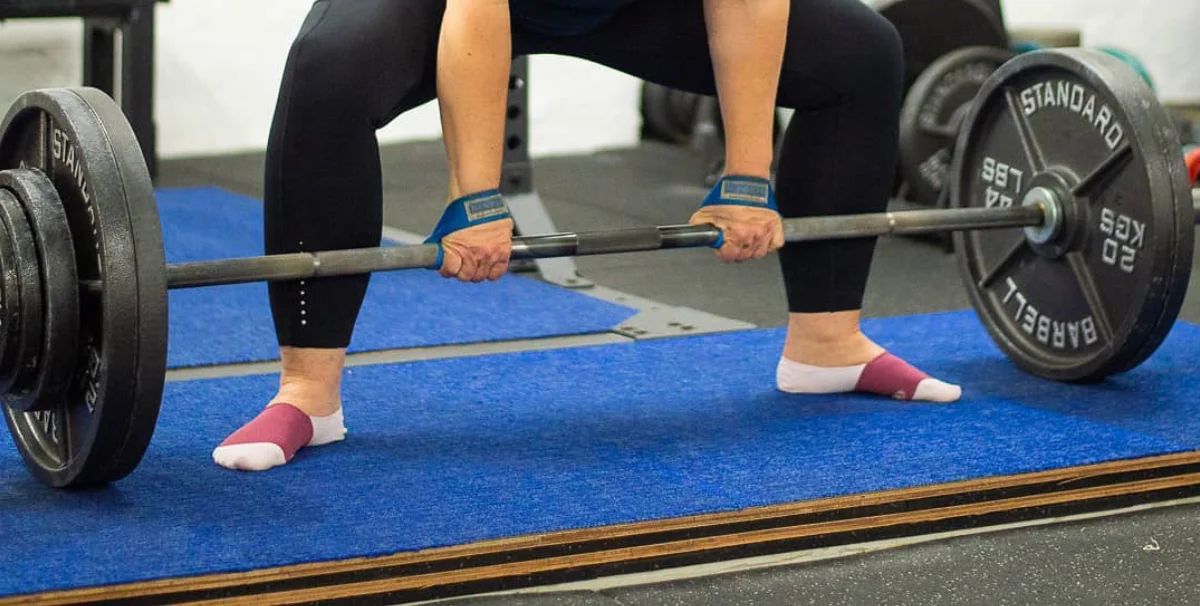Trying to create the ideal workout routine to achieve your gain goals can be quite the challenge, especially with so many variations of deadlifts existing out there!
Today’s guide covers the barbell sumo deadlift—one of the most beneficial and impressive types of deadlifts. Whether you’re looking to build muscle, increase power, or enhance strength, the full-body movement of this exercise has got your back!
From proper technique and common errors to training advantages and differences compared with the conventional deadlift pattern, get ready to dive deeper into the world of the barbell sumo deadlift!
What is a Barbell Sumo Deadlift?
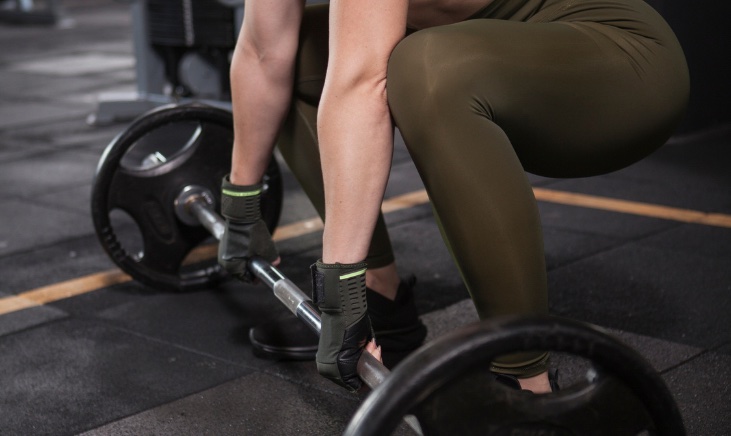
Surprisingly, a lot of gym-goers and lifting enthusiasts often mix up the barbell sumo deadlift with other types of deadlifts.
So, before all else, let’s clear up what a barbell sumo deadlift is.
A barbell sumo deadlift is an adaptation of conventional deadlifts. From its name, you can see that it uses a barbell, not a kettlebell or a trap bar.
The thing that mainly sets a sumo barbell deadlift apart from other variations of deadlifts is the stance you take during the exercise.
We’ll discuss the stance and technique in detail in a later section, but for now, you should know that it involves a characteristically wide leg split.
How Can Barbell Sumo Deadlifts Boost Your Training?
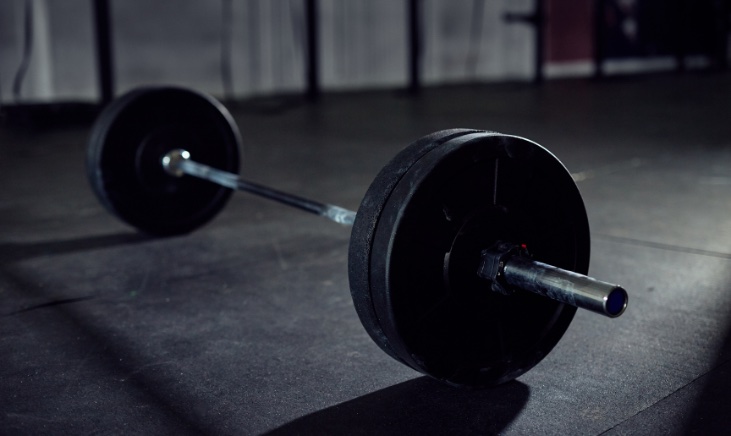
Incorporating barbell sumo deadlifts in your workout program can offer you plenty of advantages for gains, flexibility, mobility, and more. Here’s how:
- As a compound movement, you engage multiple muscle groups at the same time and spend more energy. This makes sumo barbell deadlifts particularly effective in building strength, power, and muscle.
- Barbell sumo deadlifts engage various muscles throughout the body, namely the posterior chain, hamstrings, glutes (maximus, medius, and minimus), lower back muscles, calf muscles, and quadriceps.
- Barbell sumo deadlifts make lifting easier for more people thanks to the wider leg position. Consequently, you can usually lift more weight with a sumo deadlift since a wider stance brings you closer to the floor and reduces the range that you need to lift the barbell(the lockout position at the top isn’t as high up as in a conventional deadlift).
- Sumo barbell deadlifts allow your legs to exert a significant portion of the effort, helping you develop more strength in your quads and lower body.
- The stance of a sumo deadlift puts less strain on your lower back due to its wider stance. Opening up your stance typically gives you a little bit more range in your hips, which can reduce strain. If you’re prone to back injuries, this can be an ideal alternative to traditional deadlifts.
- As you get more familiar with sumo deadlifts, you can start to increase the weight that you put on a standard deadlift bar by adding more plates.
How to Effectively Perform Barbell Sumo Deadlift?
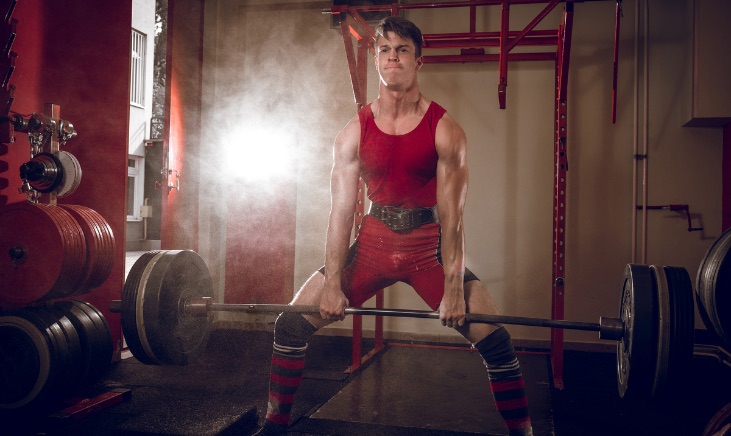
Now that you have a better idea of what a barbell sumo deadlift is and the value of adding it to your training routine, it’s important to know how to get it right to reap all of its benefits.
Practice With Proper Technique
A good sumo deadlift starts and ends with technique. From your starting position and setup to the brace and lockout, every element should be on point to ensure efficacy.
Let’s break down the steps of performing a barbell sumo deadlift:
Step 1
With your trusty barbell placed on the floor in front of you, start by standing with your feet very wide apart.
The rule of thumb here is to split your legs at a width that exceeds your shoulder width. So, the broader you are from shoulder to shoulder, the wider you’ll have to spread your feet.
Step 2
With your feet placed beyond your shoulder-width, make sure your toes are also pointing outwards.
A good indicator here is the line of your knees. Your toes should follow it, resulting in an angle of 45 degrees in most cases. You’ll find your toes directing more to the sides the longer legs you have.
It’s normal to be unable to pull off such a wide hip stance from the get-go or feel quite uncomfortable doing it. This is where practice comes in; you need to be patient and persistent, and you’ll take to it with repetition.
Step 3
Check that your shins are close to, but not touching, the bar. They should also be perpendicular to the floor.
Step 4
Bend to grab the bar while making sure of the following:
- Your back is flat
- Your chest is up
- Your hands are on the inside of your legs
- Your hands are placed shoulder-width
- Your elbows aren’t touching your knees by at least a couple of inches
- Your arms are straight
- Your grip is overhand
Step 5
Now is the time to brace yourself for the lift.
You’ll do so by first straightening your back. So lift your chest and pull your shoulders back.
Then, engage all the muscles throughout your legs, butt, core, back, and arms. You should be experiencing an overall feeling of tension.
Step 6
Take a deep breath, pulling the air into your abdomen and belly.
You’ll then begin lifting by performing two actions at the same time:
- Pull the bar up with force
- Press your feet into the floor
As you pull up with your arms and dig down with your legs, gradually straighten your knees.
While driving down with the legs, make sure that your shins are still not touching the bar and your chest is up.
Step 7
As the barbell reaches above your knees, extend your hips. Be careful not to do this too soon, but when you do, be forceful. Think of contracting your glutes here to keep the back safe and increase your power.
The simultaneous action of un-bending the knees and thrusting the hips creates a proper standing position. Don’t forget to keep your back engaged and your arms straight.
Once you’re in a standing position, keep the bar close to your body and your glutes engaged.
Step 8
After holding the standing position for a moment, lower the barbell as you exhale.
Don’t drop the barbell too quickly, and make sure you pass the same line on the way down as you did on the way up.
Work With the Right Sets and Reps
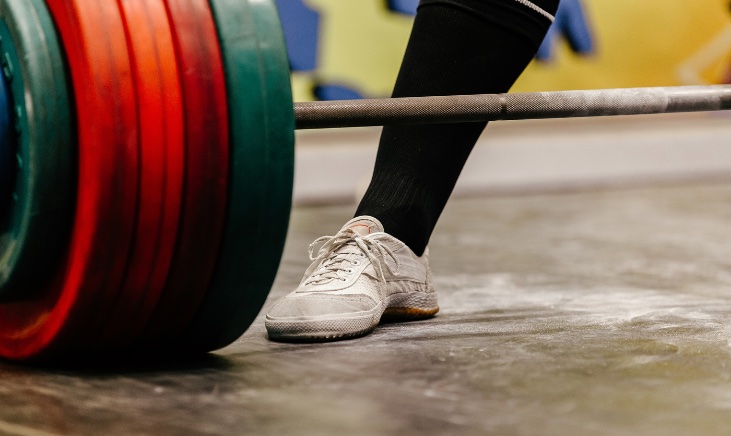
You need to tailor your sets and reps depending on the results you’re working towards.
For example, if you’re aiming to increase your muscle mass and strength, 3 or 4 sets of 6 to 8 reps should do the trick. Don’t forget to pair it with a moderate weight.
If you’re trying to focus even more on strength, you could work with a heavier weight that challenges your body and do 3 to 5 reps for 4 or 5 sets.
Just remember this is all variable and is highly dependent on whether you are a beginner, intermediate, or advanced.
Keep an Eye Out for Mistakes
A big part of following the right technique for an effective sumo barbell deadlift is knowing what not to do. Here are some common mistakes that may be holding you back:
Premature Hip Elevation
Another error associated with traditional deadlifts is lifting your hip too soon to try and break the inertia that’s tougher to get out of in a sumo position.
This causes you to strain your back, which may lead to injuries.
Ignoring Your Stretches
The technique for executing an effective barbell sumo deadlift calls for plenty of mobility, especially in the thighs and hips.
Adequate stretching before attempting a sumo deadlift is crucial to get your hips and thighs to pull.
Extending or Flexing the Back
At the top of a sumo lift, we recommend engaging the glutes and keeping a neutral spine. If you overdo extending or flexing your lower back during the lift, your spine will endure unnecessary pressure.
Realize Your Limitations
If you’re suffering from a hip injury, it’s best to keep your sumo deadlifts to a minimum. The same goes for individuals with groin injuries or back injuries.
How Does Barbell Sumo Deadlift Compare to Traditional Deadlift?
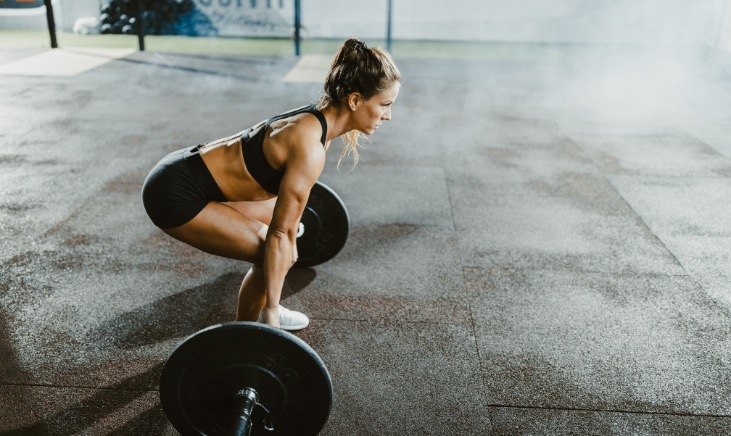
Here are some ways in which traditional deadlifting differs from sumo deadlifting:
Position
Unlike the beyond-shoulder-width stance of sumo barbell deadlifts, the conventional deadlift requires you to place your feet as wide as your hips.
Also, you put your hands outside the legs rather than inside.
Engaged Muscles
Traditional deadlifts target more back, hamstring, and glute muscles compared to sumo deadlifts and less adductors/groin.
Range of Motion
The range of motion involved in traditional deadlifts is greater than in sumo deadlifts. This makes the former type more difficult to conquer.
Pros
With conventional deadlifts, you can expect higher strength and muscle gains for your core, lower back, and hamstrings.
Cons
The narrower setup position makes traditional deadlifting a bigger challenge to overcome.
Not to mention, people with lower back problems should progress slowly when they work with conventional deadlifts.
Final Thoughts: Should You Do Barbell Sumo Deadlifts?
To wrap things up, here’s when you should do barbell sumo deadlifts:
- If you want to include a deadlift in your routine that doesn’t demand as much of your lower back
- If you’re looking for an effective alternative conventional and/or trap bar deadlifts (because sumo deadlifts engage similar muscle groups)
- If you’re suffering from joint or mobility issues that prevent you from doing regular deadlifts
- If your body type features a short torso and long legs (making it harder to perform regular deadlifts).
- If you’re looking for a beginner-friendly deadlift

Article by
Mike has been in the training industry since 2008 and is a Certified Strength and Conditioning Coach through the National Strength and Conditioning Association. His personal training philosophy is anchored in developing an effective mindset: Once you have a solid mental foundation to commit to fitness, can achieve greater fitness goals.

